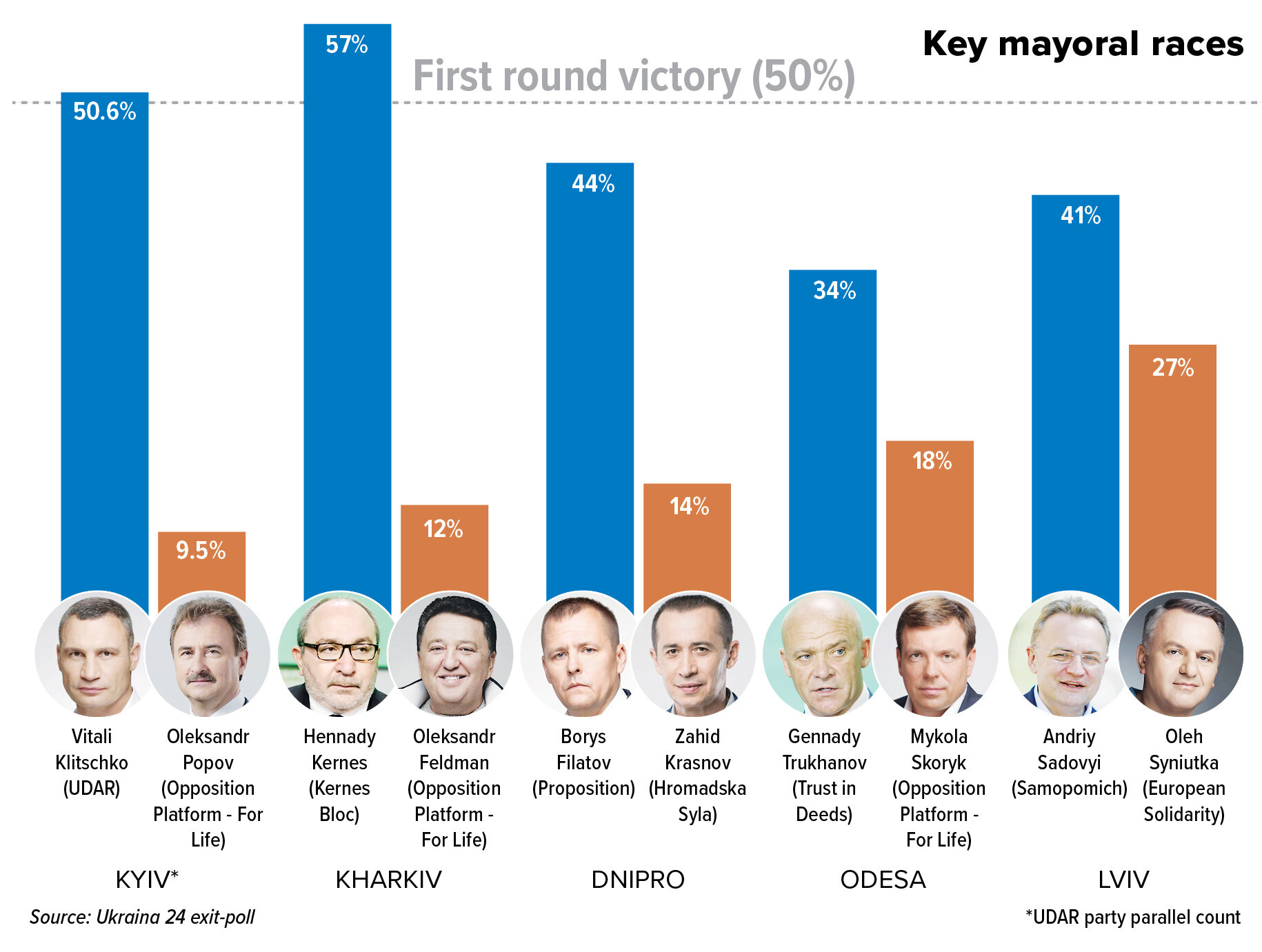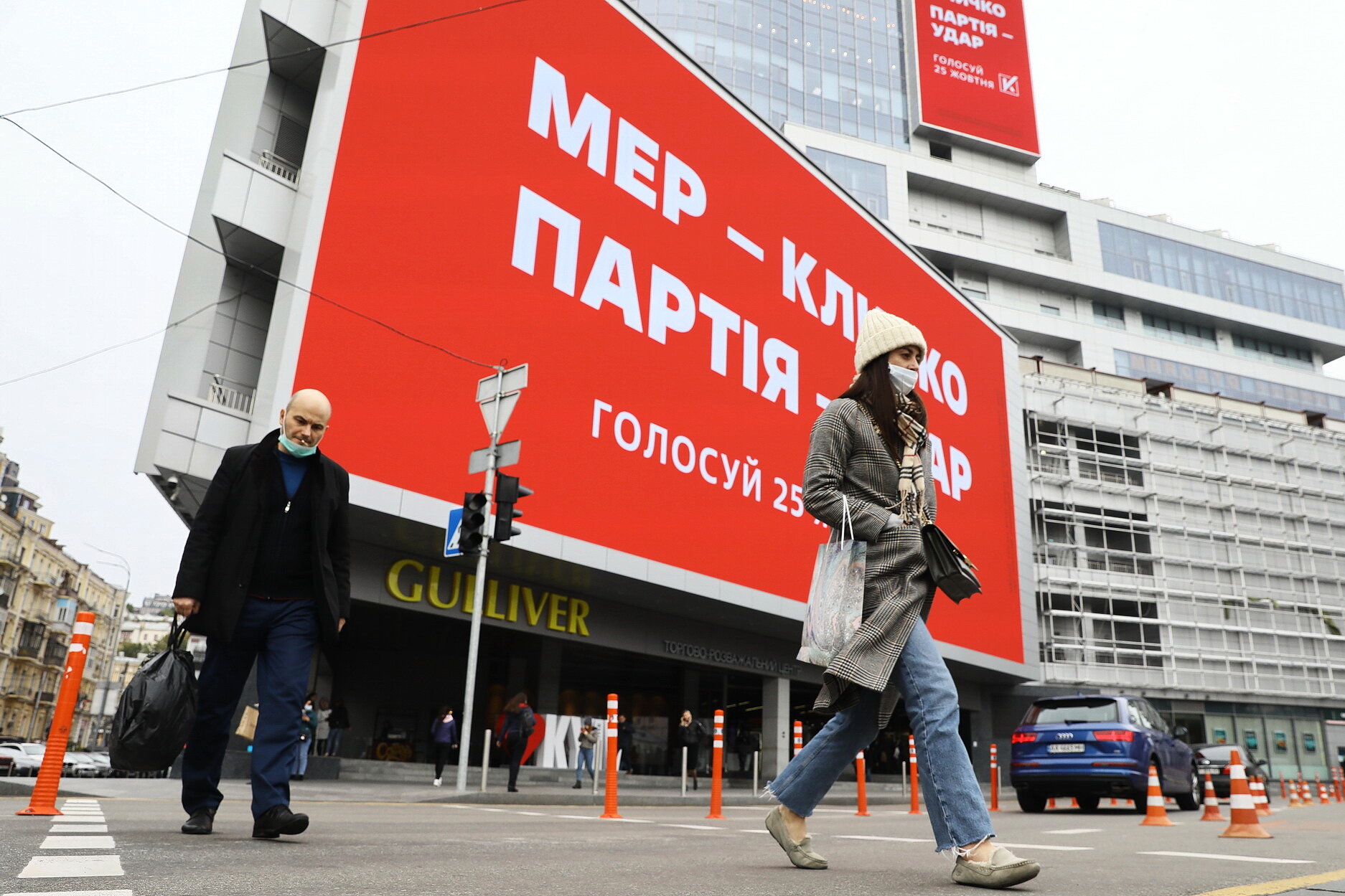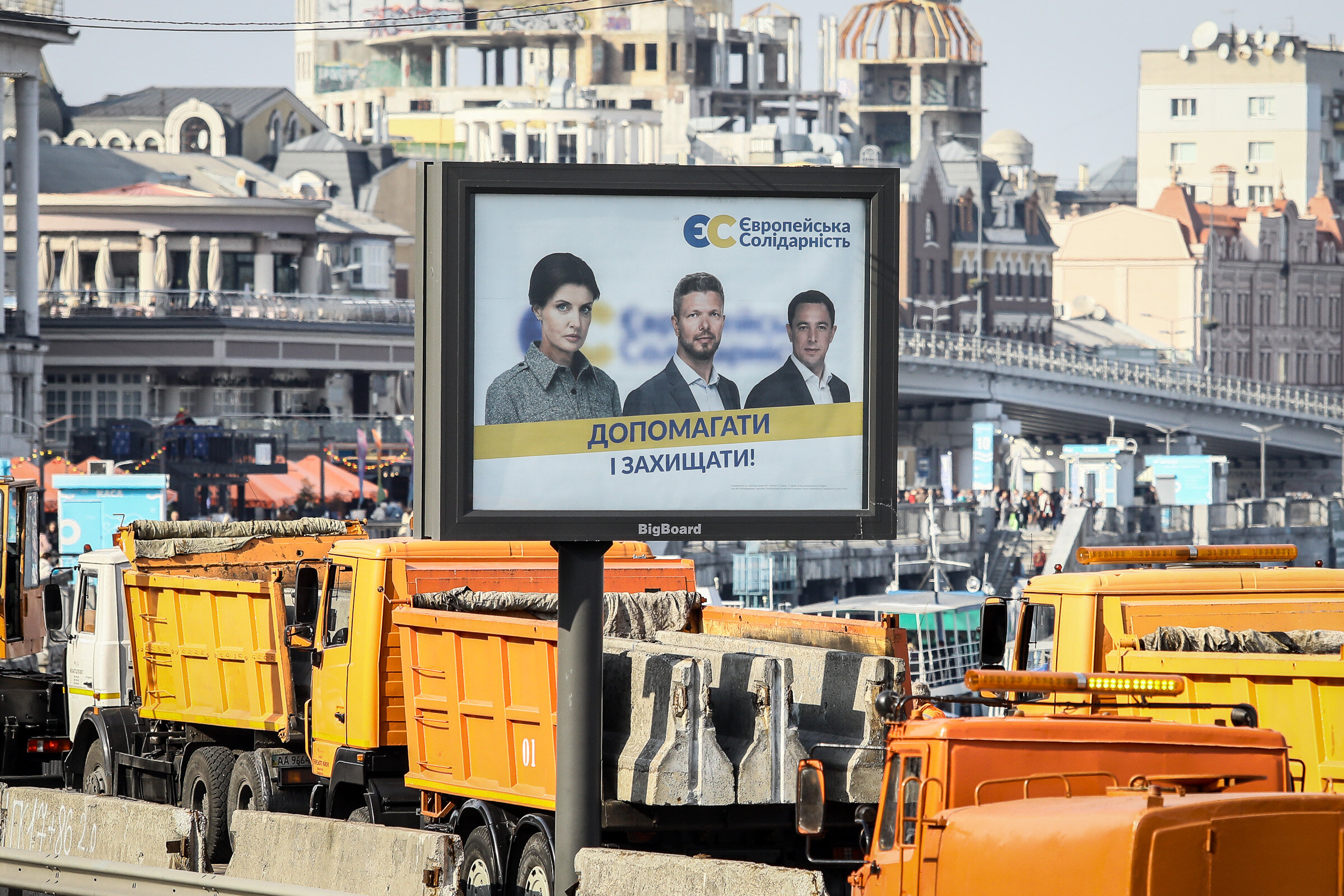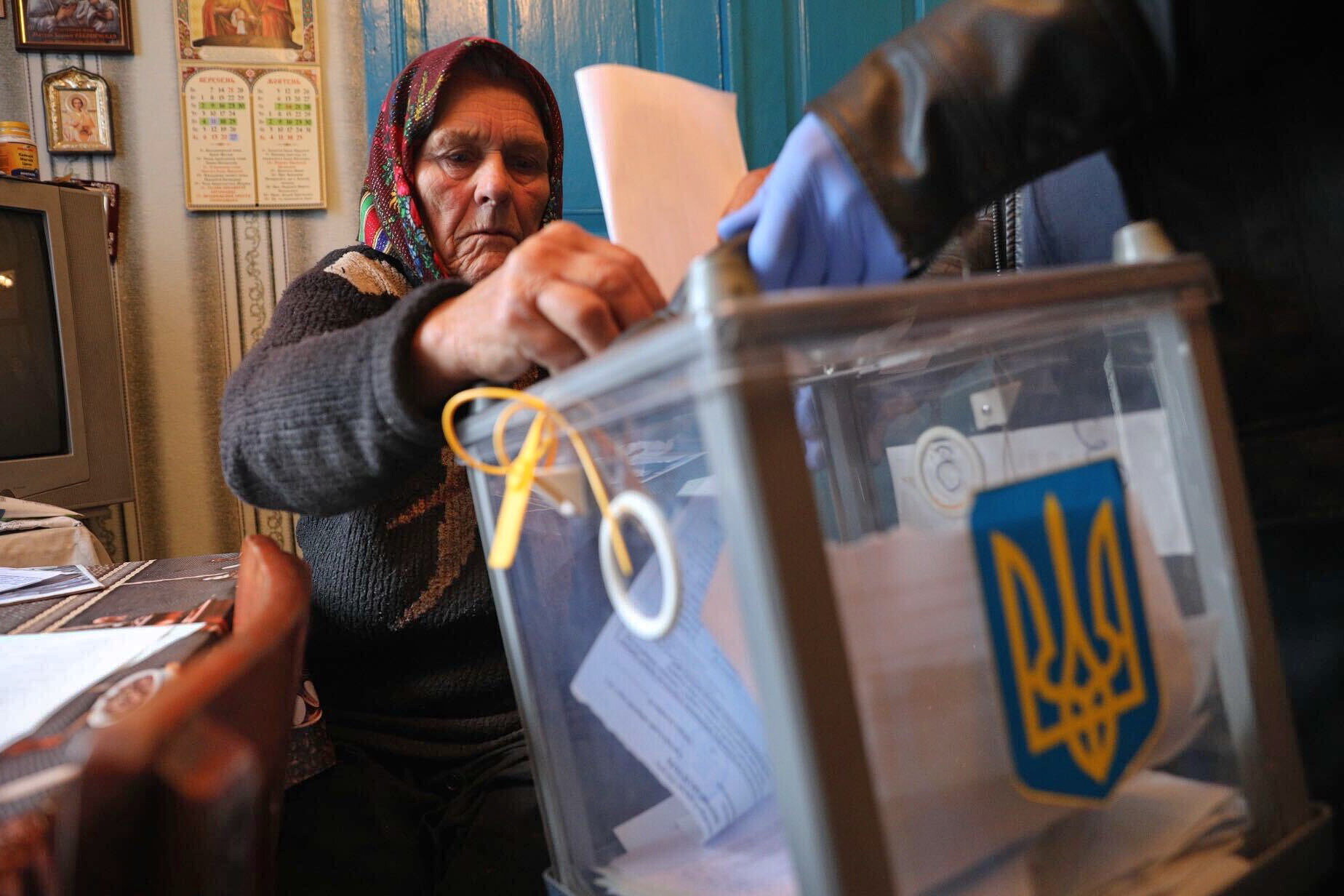Ukraine’s three largest parties have all proclaimed themselves the winners of the 2020 local elections.
Some won regional councils, others won city councils – but all of them lost Ukraine’s major cities, where regional elites secured dominance.
The incumbent mayors reaffirmed their standing around the country, including those with corruption allegations against them. Ukraine’s two largest cities saw incumbents receive over 50% of the vote. Others came just short of winning in the first round.
As for national parties, Ukraine once again experienced a clear divide in preferences between the country’s east and west.
The pro-NATO European Solidarity party, led by ex-President Petro Poroshenko, was the most successful in western Ukraine and Kyiv. The pro-Russian Opposition Platform – For Life party did well in the southeast.
The only major party which wasn’t able to secure first place in any big city or region was President Volodymyr Zelensky’s Servant of the People party – a cold shower after the party’s landslide victory in the parliamentary election just a year ago.
With the governing party performing poorly and those opposing the president gaining ground on the local level, political observers predict further conflict between Kyiv and the regions. Local authorities might even decide to disregard the central government’s orders.
“We see a sort of neo-feudalism, where each city is governed by a (separate) local elite,” says Anatoly Oktysiuk, a political expert at local think tank Democracy House.
Locals win
Regional parties led by mayors are the only clear winners of the Oct. 25 local elections.
The official results haven’t yet been announced by the Central Election Commission, which has until Nov. 5 to count the ballots. But major parties have been publishing their own parallel counts showing that local mayors are well in the lead.
The mayors, most of whom are accused by activists and local watchdogs of corruption or mismanagement, will now have a firm grip on city councils. The councils are responsible for allocating funds from the city budgets and for assigning lucrative land plots in the city to construction companies.
The mayors of Ukraine’s five largest cities – Kyiv, Kharkiv, Odesa, Dnipro and Lviv – all came first with a comfortable lead. In most regional capitals, the situation is similar, with incumbent mayors beating national parties at the ballot.
Kharkiv Mayor Hennady Kernes received 57% according to his party’s parallel count – he won’t require a runoff. Kyiv Mayor Vitali Klitschko says he received 50.6%, which also gives him a victory in the first round.
Dnipro Mayor Borys Filatov and controversial Odesa Mayor Gennady Trukhanov received 44% and 34%, respectively, according to exit polls by the Ukraina 24 TV channel.
Their opponents, who will face them in the runoffs, each won no more than 15% in the first round.
The only major city where the eventual winner is still too close to call is Lviv, where Mayor Andriy Sadovyi and former Lviv Oblast Governor Oleh Syniutka, running on the ticket of European Solidarity, will face off in the runoff.
The Ukraina 24 exit-poll gave Sadovyi 41%, while Syniutka took 27% of the vote. Ruslan Koshulynsky, who ran with the nationalist Svoboda party, received 9%. Koshulynsky’s endorsement will be crucial to decide the runoff.

Of the big-city mayors, Borys Filatov of Dnipro, Gennady Trukhanov of Odesa, and Andriy Sadovyi of Lviv are facing runoff elections on Nov. 15, after failing to win a majority of foces. Kyiv Mayor Vitali Klitschko and Kharkiv Mayor Hennady Kernes cruised to reelection in the Oct. 25 local elections. No single political party dominated the voting.
In Kharkiv, Dnipro and Odesa, the mayors have also led their regional parties to first place in their cities’ councils. In Lviv and Kyiv, the parties led by incumbent mayors came second in the city council races, losing only to the European Solidarity party.
With the ongoing decentralization reform, cities and villages are receiving more political, administrative and fiscal independence.
Cities now keep 100% of their property taxes and low-rate income tax for businesses and 60% of income taxes.
That’s millions of dollars.
Furthermore, Zelensky will have an even harder time forcing mayors to follow government orders. Most mayors have strained relations with Zelensky, who publicly attacked city heads to score points before the 2019 parliamentary election.
Notable examples are mayors of regional capitals – Ivano-Frankivsk, Ternopil and Cherkasy – who disagreed with the government’s COVID-19 response and sabotaged the mandatory closure of businesses in their cities.
All three are expected to secure re-election.
“It’s frightening,” says Oktysiuk. “Regional elites concentrated vast resources in their hands — taxes, land, the local apparatus — and there are no checks on their work.”
Zelensky’s bitter ‘win’
Nonetheless, Zelensky’s Servant of the People party has been framing the 2020 local elections as a victory.
Political observers doubt that receiving less than half of the vote can be labeled a success compared to the 2019 parliament election, but don’t call the party’s result a straight-up failure either.
During the 2019 parliamentary election, Zelensky received 43% of the popular vote. Over a year after receiving a comfortable majority in parliament, his unprecedented support rate evaporated.
However, political analyst Volodymyr Fesenko says that it’s not entirely right to hold the 2019 election result as a benchmark for the president’s party, because of how abnormally high it was.
“The 2019 parliamentary result was an anomaly for Ukraine. There was never anything like it and there never will be,” he told the Kyiv Post.
Despite that, the Servant of the People party leader Oleksandr Kornienko told the Interfax-Ukraine news agency that the local elections were a major success.
According to the party’s parallel election count, Servant of the People received 19% of the seats in regional councils. The party’s main competitors, European Solidarity and Opposition Platform – For Life, received 15% and 13% of the seats, respectively.
In reality, even though Zelensky’s party was able to score a victory based on the overall number of seats, it is spread almost equally across the country, coming third in all key regions. Servant of the People has the majority of seats only in four regional councils out of the 23 councils up for grabs.

Ukrainian President Volodymyr Zelensky casts his ballot at a polling station during local elections in Kyiv on Oct. 25, 2020.
According to Oktysiuk, the lack of a clear ideology, the absence of a core electorate that was willing to vote despite an ongoing coronavirus pandemic and the shortcomings of Zelensky and his governing party while in power were the primary reasons behinds the party’s weak results.
“They couldn’t build an actual party. They previously rode on the president’s coattails,” says Oktysiuk.
Now it’s all gone.
East-west divide
While not taking the majority of seats nationwide, two opposition parties have been celebrating.
European Solidarity and the Opposition Platform – For Life party have improved their standing in their core regions, returning the long-gone east-west political divide.
Prior to Russia invading Ukraine in 2014, the country was nearly equally divided between pro-European and pro-Russian voters. Pro-Western parties usually took the fifteen northwest regions and the pro-Russian Party of Regions took the nine more populous southeastern regions and the Autonomous Republic of Crimea.
After the Russian occupation of Crimea and the beginning of the ongoing war in Donbas, pro-Russian parties lost a substantial number of voters. Now they are regaining momentum.
According to preliminary results, the Opposition Platform – For Life party, led by Russian President Vladimir Putin’s close friend, lawmaker Viktor Medvedchuk, received the most seats of any parliamentary party in Ukraine’s southeast.
In Odesa, the party’s candidate will compete in the runoff against Trukhanov, while in Kyiv the party candidate came second in the first round and would have advanced to the runoff had Klitschko received less than 50%.
“Medvedchuk has firmly entrenched himself on the pro-Russian flank,” says Oktysiuk.
Another pro-Russian party led by notorious blogger Anatoly Shariy was able to receive only up to 8% in three regional capitals, polling far behind Medvedchuk.
Contrary, Poroshenko’s European Solidarity won the majority in five regional councils including Lviv Oblast and Kyiv, which, according to the law, is equivalent to a region. The party also has the chance to win the Lviv mayoral runoff.
The two parties have also benefited from voter turnout being only 37% — the lowest since independence.
“These two parties have a clear, ideologically-motivated core base,” says Fesenko. “For them, it is easier to mobilize supporters to polling stations.”
Smaller parties collapse
Yet, not all opposition parties are celebrating. Smaller parliamentary parties saw a weak showing, which calls into question their further existence.
Batkivshchyna, Voice and For the Future all fell short of expectations.
The Batkivshchyna party, which holds 24 seats in parliament and is led by ex-Prime Minister Yulia Tymoshenko, couldn’t win a single region. Yet, the party was able to hold onto its support in rural communities.
According to the Servant of the People election count, Batkivshchyna obtained up to 10% of the seats in regional councils, doing well in villages and poorly in cities.
Batkivshchyna maintained its overall fourth place, yet its lag behind the country’s main opposition parties increased.
The Voice party, which holds 19 seats in parliament, couldn’t find support among any social group. The party, which presents itself as a modern pro-European party, did poorly in its key cities of Kyiv and Lviv, receiving less than 10%.
In multiple regions, the party polled below one percent.
The party was overpowered by Poroshenko, who monopolized the support of the pro-European electorate.
“I don’t see a future for the Voice,” says Oktysiuk.
According to Oktysiuk, the local election showed that there are currently four nationwide politicians in Ukraine – Zelensky, Poroshenko, Medvedchuk and Tymoshenko.
Government shakeup
Before the elections, many expected that the local race would have a crucial effect on national politics. Among them was oligarch Ihor Kolomoisky, who was trying to use the local election to improve his standing on the national level.
The Kolomoisky-sponsored For the Future party, led by lawmaker Ihor Palytsa, secured fifth place in the local elections. The party was born out of a parliamentary group of 24 lawmakers close to the oligarch.
Palytsa is Kolomoisky’s long-standing business partner and formerly the head of the Ukrnafta oil company controlled by the oligarch.
However, Fesenko says that the party received fewer votes than initially expected, calling into question Palytsa’s political future.
For the Future won elections in Volyn Oblast and few regional capitals, yet the results fell short of the party’s spending, which experts believe to be among the largest sums spent by a party in the local elections.
Before the election, Palytsa was Kolomoisky’s favorite for the post of prime minister, which many believe may soon be vacant. A strong performance in the local elections should have shown Zelensky that Palytsa is a good choice.
“Kolomoisky wanted to make Palytsa prime minister or at least a deputy (prime minister). Now they’ll have to wait,” said Oktysiuk.
Yet even without Kolomoisky’s intrusion, Zelensky is expected to make several changes.
“There will be multiple changes inside the president’s office. Some people will be fired,” says Fesenko. “A few ministers will lose their jobs, many governors as well.”






